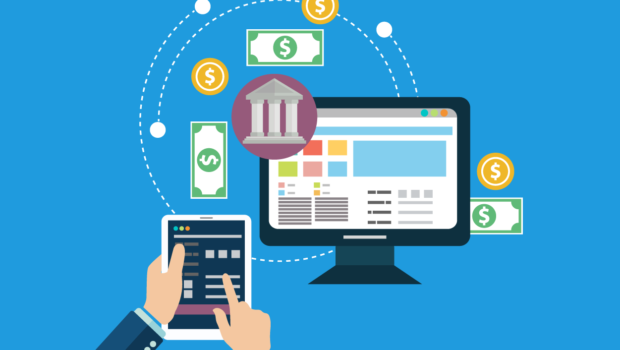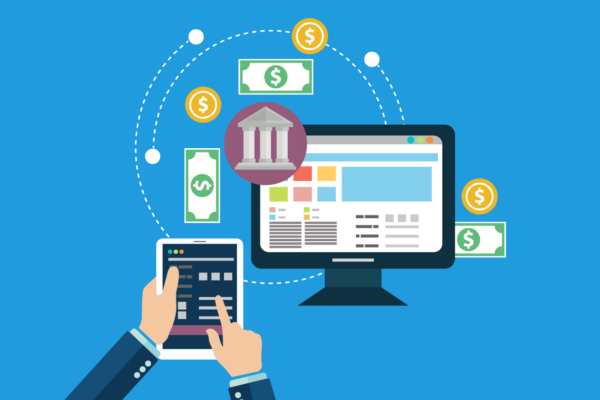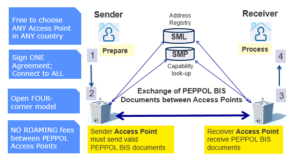What do modern B2B payment solutions look like?
The UK sees over 2.2 billion business to business (B2B) transactions every year, with many of these made via well-established methods such as BACs and CHAPs. With business to consumer (B2C) transactions benefiting from advances in digital technology, however, why is it that suppliers and business providers should have to make do with outdated payment solutions?
Whilst it might be standard practice for businesses to include account information on their invoices, that doesn’t mean that doing things the traditional way will be the fastest or even most reliable method of collecting payment for products or services.
In this article, we look at some of the most effective B2B payment solutions that give the tried and tested systems a run for their money.
What’s the difference between B2B and B2C payments?
First things first, it’s important to recognise that although B2B payments are quite similar to B2C payments, transactions between businesses involve additional processes and complexities. Where consumers typically have a degree of choice in how they make payment, businesses often find themselves limited by the terms of their contract and any rules imposed by relevant governmental bodies. This can make for a very formal process that requires businesses to invest heavily in their office resources and accounts payable team.
For one thing, B2B payments often involve much greater values than B2C payments and can be made over a longer time period. Unlike payments at a consumer level which are most frequently made at the point of sale, B2B payments are often made on the basis of more detailed contracts that allow for a payment term of multiple days. Whilst 28 days or a month might have been common in years gone by, the figure is slowly shortening and statistics from accounts management firm Atradius Collections show that the average payment term is now 24 days for domestic B2B transactions.
Ultimately, businesses generally deal with a more convoluted transactional process than consumers. This is primarily because a failed B2B payment can have much more serious consequences than the inconvenience and potential loss of stock arising from an unsuccessful B2C transaction. For purchasing companies a failed payment could leave them unable to trade whilst lacking an essential component of their business, whilst sellers might find themselves with serious cash flow issues.
How do businesses pay each other?
The status quo for B2B payments in the UK is undoubtedly the bank transfer. With the consultants at UK Finance recording over 50% of B2B payments still being made by BACs or CHAPs as recently as 2018, it’s clear that the UK’s commercial scene has stuck by manual processing whilst failing to adopt more modern payment solutions.
Despite many years of businesses transacting via bank transfer, it certainly isn’t the perfect payment solution and it could even leave you unequipped for trading under present-day conditions. One of the major problems with payments made via bank transfer or cheque is that they involve a time-intensive process. From manually authorising a payment to it being screened by the bank, a BACs payment takes three working days to hit the account of its intended recipient – and that’s if the purchaser pays on time. This has the potential to cause serious cash flow issues, not to mention the costs of employing an accounting team to handle B2B payments that often face a long process of authorisation, input, and audit.
What are the alternatives?
Just as modern-day B2C payment solutions have come on leaps and bounds since the introduction of CHIP and pin in 2006, so too have merchant services providers made major strides in the field of B2B payments.
One option is to take payment via credit card – whether on limited payment terms or at the point of sale. This is standard practice for eCommerce businesses and those selling software as a service (SaaS), with the possibility of instant remittance to the vendor’s bank account. As a popular payment solution, completing B2B transactions via credit card might sound like an easy switch for modern businesses but it is worth bearing in mind that credit card processing fees could quickly stack up for those who need to deal with high sales volumes.
Another well-regarded choice for B2B payments is the eCommerce payment gateway. Much in the same way that a consumer might pay for a purchase online, a payment gateway could allow you to take B2B payments via a seamless website process that allows purchasers to complete the transaction with a card that suits them. With additional reporting features and the goal of streamlining B2B commerce at its heart, the online payment gateway is a fast and reliable payment solution that not only works but looks slick when doing so.
Making the right decision for your business
Whichever payment solution you choose for your B2B transactions, it’s crucial that you partner with an efficient and trustworthy merchant services provider. UTP Group is one well-renowned company providing a full suite of payment solutions such as eCommerce payment gateways, virtual terminals and classic contactless card machines. With same-day funding options and the possibility of receiving convenient finance packages in the form of a cash advance, your business could benefit from a little innovation in the payment solutions field.
Migrating from old payment practices to new ones can be difficult, particularly as making and receiving payments is the lifeblood of any business. For those in the B2B sphere, it can sometimes be tempting to avoid upgrading your infrastructure when you know that it isn’t consumer-facing. Sticking with the past isn’t necessarily the best way to work in the long term, though, and taking or receiving payment should be treated with the same importance as any other business function. After all, it is what pays the bills.

















